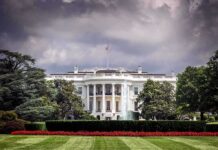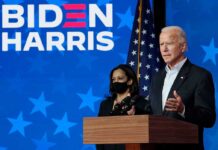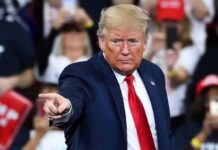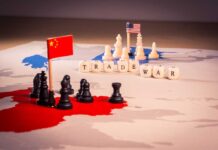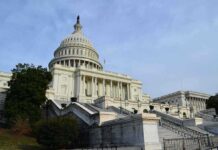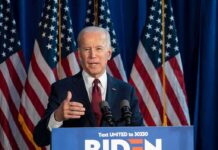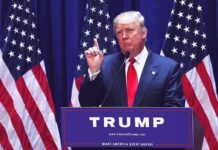
President Trump’s administration must navigate a treacherous path between upholding American values and securing U.S. interests as global powers increasingly challenge the traditional Western-led human rights framework.
Key Takeaways
- U.S. foreign policy has historically balanced human rights advocacy with strategic national interests, often prioritizing the latter in regions like the Middle East
- Key legislation and institutions including the Foreign Assistance Act of 1961 and the State Department’s Country Reports on Human Rights Practices form the backbone of America’s human rights policy
- Emerging powers like China are challenging U.S. leadership on human rights, requiring a stronger American stance
- Technology’s dual role in both promoting and suppressing human rights presents new challenges for U.S. policymakers
- Trump’s administration has an opportunity to strengthen America’s position through robust defense of human rights while protecting vital national interests
America’s Complex Human Rights Legacy
The United States has long positioned itself as the world’s foremost champion of freedom and democracy, with human rights rhetoric woven deeply into its diplomatic fabric. This commitment was formalized after World War II when America helped establish the United Nations Charter and the Universal Declaration of Human Rights, marking a pivotal shift in international relations. The post-war era saw the U.S. develop significant institutional frameworks to advance human rights globally, including the Foreign Assistance Act of 1961, which linked foreign aid to human rights conditions, and the Jackson-Vanik Amendment of 1974, addressing freedom of emigration in non-market economies.
These mechanisms, along with the State Department’s annual Country Reports on Human Rights Practices and the U.S. Commission on International Religious Freedom, have created a complex apparatus through which America promotes its values abroad. However, the tension between idealistic principles and pragmatic interests has remained constant throughout administrations of both parties. President Trump’s administration now faces the challenge of reinvigorating this framework while adapting it to a rapidly changing global landscape where U.S. dominance is increasingly contested by rising powers with alternative visions of governance.
The Power Dynamics of Global Human Rights
Both the executive and legislative branches wield significant influence over America’s human rights approach, creating a dynamic and sometimes inconsistent policy landscape. The President, as the chief architect of foreign policy, establishes the tone and priorities of human rights engagement, while Congress leverages funding authority and oversight capabilities to shape implementation. This division of responsibilities has historically created both tension and balance in how America projects its values abroad. The interplay between these branches becomes particularly evident when national security concerns clash with human rights imperatives, forcing difficult choices about which values to prioritize.
Regional approaches to human rights promotion vary dramatically across U.S. foreign policy. In the Middle East, security partnerships and energy interests have frequently overshadowed human rights concerns, while in Asia, economic engagement often takes precedence. Latin American policy has emphasized democratic governance, and European relationships have generally aligned around shared values. The rise of China as a global power has fundamentally altered this landscape, introducing a competing model that challenges the Western liberal order and requires a more assertive American response that balances pragmatism with principled leadership.
Technology and New Frontiers in Human Rights
The digital revolution has dramatically transformed the human rights landscape, creating both unprecedented opportunities for freedom and dangerous new tools for repression. Authoritarian regimes increasingly deploy sophisticated surveillance technologies to monitor and control their populations, while social media platforms simultaneously amplify dissident voices and spread harmful misinformation. The Trump administration faces the complex task of developing policies that harness technology’s liberating potential while countering its use for oppression. This challenge requires cooperation with the private sector and like-minded nations to establish norms and standards that reflect American values.
Climate change represents another emerging frontier in human rights policy, with environmental degradation threatening fundamental rights to life, health, and livelihood for vulnerable populations worldwide. The intersection of environmental justice with traditional human rights concerns creates new imperatives for U.S. policy, requiring innovative approaches that protect American economic interests while acknowledging the human costs of environmental degradation. President Trump’s administration must chart a course that secures America’s prosperity while demonstrating leadership on these interconnected challenges that no nation can address alone.
Reforming America’s Human Rights Approach
The path forward for U.S. human rights policy demands both structural reforms and strategic vision. Strengthening existing laws and institutions represents a crucial first step, ensuring that mechanisms like the Magnitsky Act and human rights vetting processes maintain their effectiveness in a changing world. Supporting human rights defenders and civil society organizations provides America with valuable partners in promoting democratic values, while improved coordination with international bodies and like-minded nations multiplies American influence. These reforms must be undertaken with clear recognition of both America’s exceptional role and the limits of its power.
President Trump’s administration has the opportunity to reaffirm America’s commitment to human rights while acknowledging the complex realities of a multipolar world. This requires a foreign policy that clearly articulates American values without naive idealism, recognizing that promoting human rights serves both our moral principles and strategic interests. By demonstrating that peace through strength includes a robust defense of fundamental freedoms, the United States can counter the narrative of American decline while building a more stable international order that reflects our deepest values and secures our most vital interests for generations to come.


 News Editor
News Editor


